Mud Volcano Area - page 2
Page 1 2
On the loop trail downhill you come across Churning Caldron. In the late 1970s an earthquake initiated a heating-up of the formerly lukewarm pool, and in 1996 permanent spouting activity started, continuing to date.
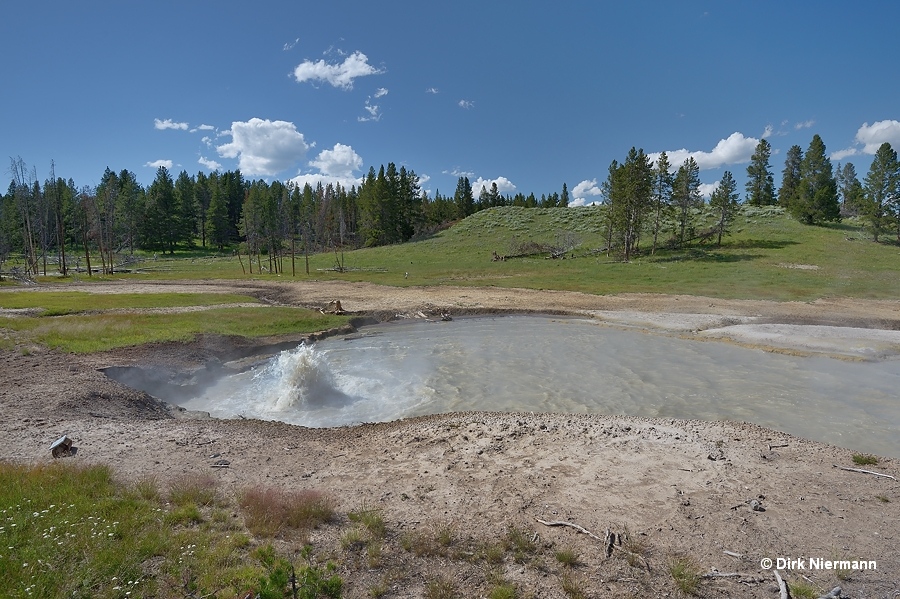
Farther downslope Sizzling Basin shows up. The name refers to its appearance up until the early 1970s, when evaporating carbon dioxide caused a thin layer of mud to sizzle like a frying pan. Accordingly, this rare type of hot spring is designated as frying pan. Meanwhile the carbon dioxide supply has decreased and the feature turned into a strongly acidic, muddy hot spring.
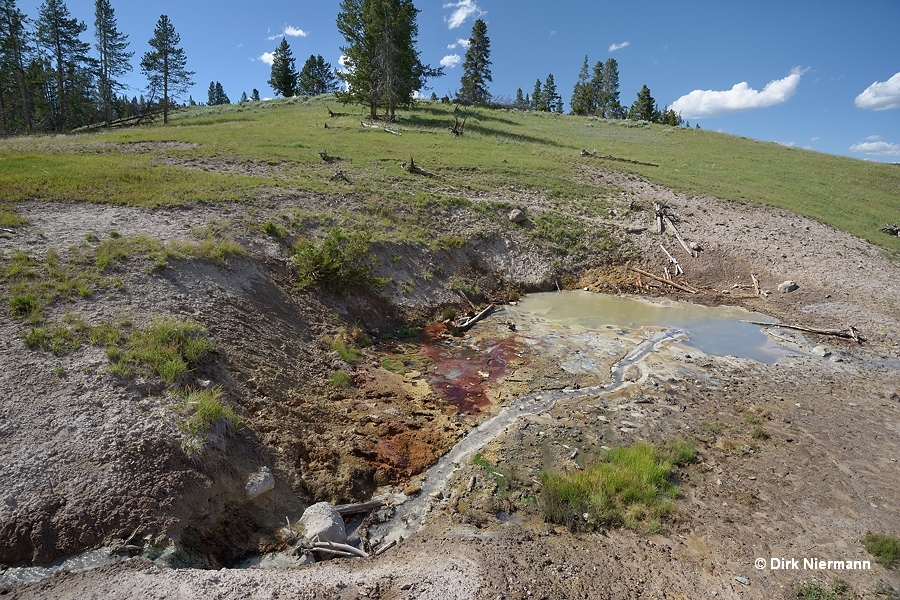
The most important geyser on location occupies an area between the trail and the Grand Loop Road. Mud Geyser was active up until the late 19th century, erupting from a deep funnel every few hours up to 17 m (50 feet) high. Since that time it's dormant, but several new fumaroles, springs, and mud pots developed in the vicinity. That way the original Mud Geyser has been enlarged to the expanded acidic pool of today.
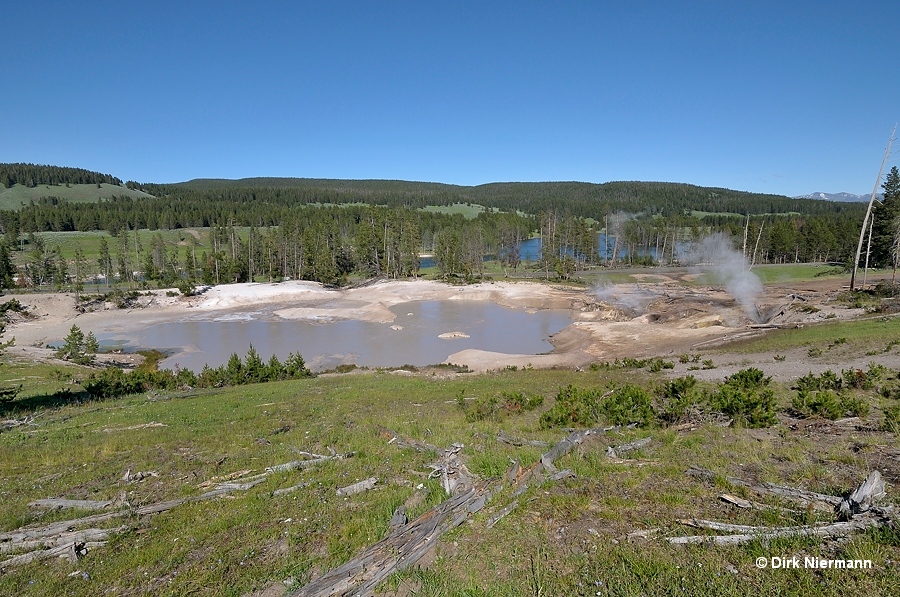
The loop trail comes full circle at Mud Caldron. Its muddy water is hot, but not boiling. The visible turbulences are caused by carbon dioxide instead.
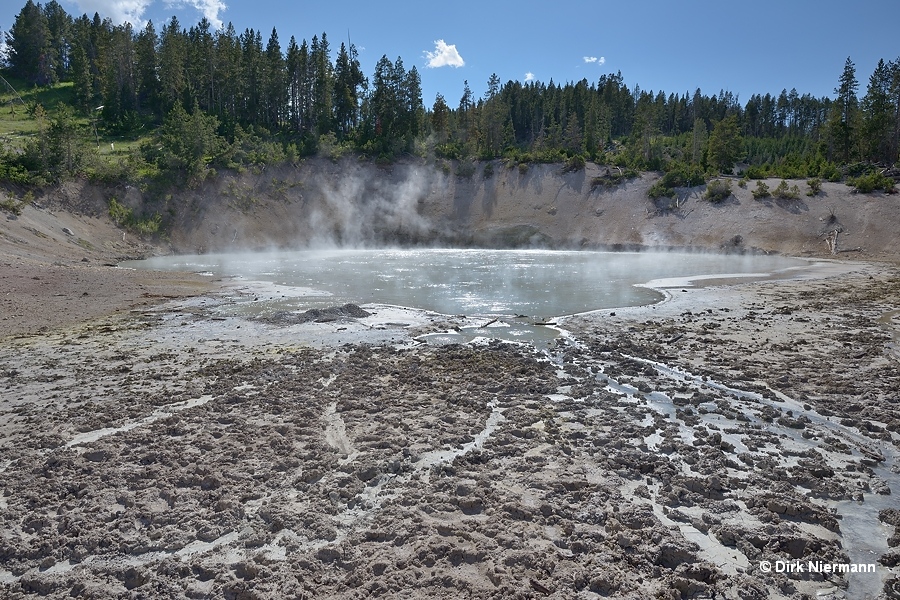
Across the Grand Loop Road from Mud Geyser and on the eastern bank of Yellowstone River two large, unnamed mud craters appear. Neither of them is filed in the RCN database. While the left one contains one very large mud pot, the right one comprises several smaller pools. The craters can be spotted even from the road, but there is also an extra turnout for observation.
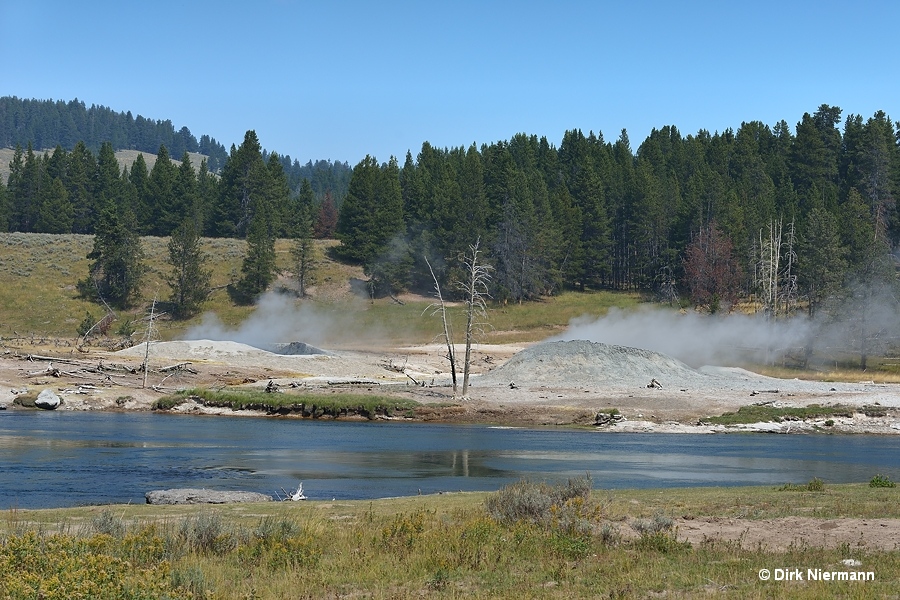
Page 1 2